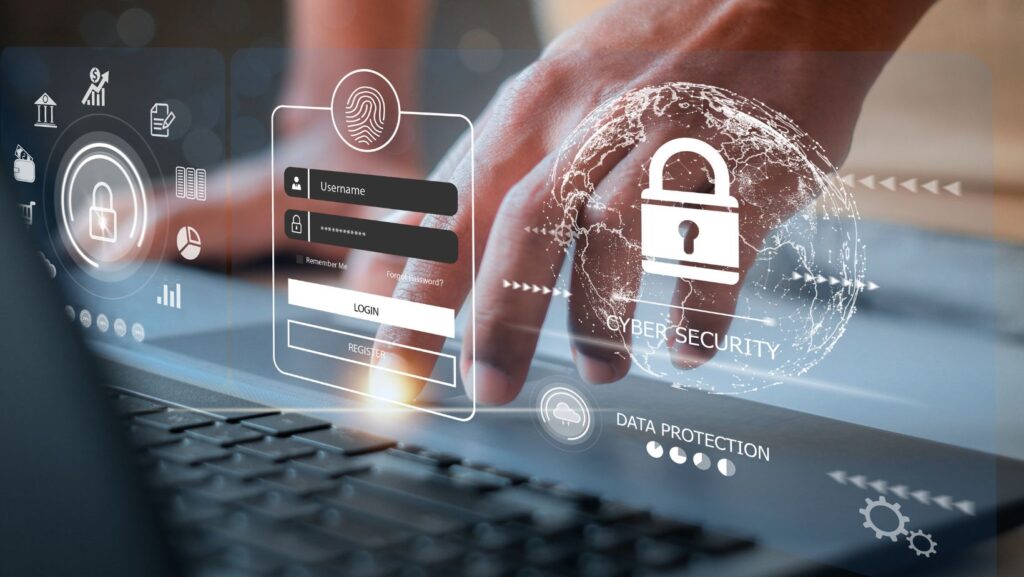In today’s digital world, many companies have adopted a “Bring Your Own Device” (BYOD) policy. This means that employees can use their personal devices, like smartphones, laptops, and tablets, to access work-related resources. While this offers convenience and flexibility, it also introduces security risks. With personal devices connecting to company networks, sensitive data becomes more vulnerable to cyber threats. This is where Zero Trust security comes into play.
Zero Trust is a security model that requires strict verification for every user and device, whether inside or outside the organization’s network. The principle behind Zero Trust is simple: trust no one, verify everything. For companies that have adopted BYOD policies, implementing Zero Trust can be the key to keeping sensitive data safe. In this article, we’ll explore how to implement Zero Trust for secure BYOD environments in a clear and basic way.
What Is Zero Trust?
Before diving into how Zero Trust can be applied to BYOD environments, it’s essential to understand what Zero Trust really means. Traditional security models often assume that everything inside the organization’s network is safe. In other words, once you’re inside the network, you’re trusted. However, this approach is outdated and ineffective against modern cyber threats.
Zero Trust changes the game by assuming that no one, whether they are inside or outside the network, is trusted by default. Every user, device, and network request must be verified before access is granted. This approach limits the risk of unauthorized access and minimizes the damage if a breach occurs. With Zero Trust, the idea is to assume that bad actors are already inside your network, and you need to stop them at every turn.
Why Zero Trust for BYOD?
When employees bring their own devices to work, they often use them for both personal and professional purposes. These devices may not have the same security controls as company-issued devices. For example, a personal phone might lack strong encryption, antivirus software, or regular updates. When such devices access corporate networks, they could introduce vulnerabilities.
To address these concerns, implementing Zero Trust BYOD policies is crucial. By adopting a Zero Trust model, companies can ensure that every device, whether personal or corporate, goes through a rigorous verification process. This means that only authorized users and devices can access sensitive information, significantly reducing the likelihood of a security breach.
Key Principles of Zero Trust for BYOD
Implementing Zero Trust in a BYOD environment involves several key principles. Let’s break down these principles and see how they work in practice.
-
Verify Every User
In a zero-trust environment, every user must be verified before they can access company resources. This verification process is not just about entering a password. It involves multiple factors to ensure that the user is who they claim to be. Multi-factor authentication (MFA) is a common practice in Zero Trust. This might involve using a password combined with a one-time code sent to the user’s phone or an app.
For BYOD environments, verifying users is essential because personal devices can be lost, stolen, or used by others. By implementing MFA, companies can ensure that even if someone gets hold of an employee’s device, they still won’t be able to access company data without passing the verification process.
-
Verify Every Device
Not only do users need to be verified, but so do their devices. In a Zero Trust BYOD environment, employees use various types of devices to access corporate networks. Some might be using a laptop, while others may access work emails on their smartphones. Each of these devices must be verified to ensure they meet the company’s security standards.
For example, a company might require that all devices have up-to-date antivirus software, encryption, and secure connections. If a device doesn’t meet these standards, it won’t be allowed to connect to the network. This ensures that only secure devices can access company data, reducing the risk of malware or other cyber threats being introduced through personal devices.
-
Limit Access Based on Need
Another key principle of Zero Trust BYOD is limiting access based on the user’s role and what they need to do their job. This is often called the “principle of least privilege.” For instance, an employee working in customer service doesn’t need access to the company’s financial data. By limiting access based on roles, companies can minimize the potential damage if a breach occurs.
In a BYOD environment, it’s important to apply this principle to both users and devices. For example, an employee’s smartphone might only need access to emails, while their laptop might require access to more sensitive information. Zero Trust ensures that each device only has the access it needs to perform specific tasks.
-
Monitor and Respond in Real-Time
Zero Trust also emphasizes continuous monitoring of network activity. Even after users and devices are verified, it’s important to keep an eye on what they’re doing. If unusual or suspicious activity is detected, the system can respond immediately by locking down access, sending alerts, or requiring re-verification.
For example, if an employee’s device suddenly starts downloading large amounts of sensitive data late at night, this could trigger an alert. The system could automatically block access and notify the IT team. By monitoring and responding in real-time, Zero Trust helps to prevent security incidents before they cause significant harm.
Steps to Implement Zero Trust in BYOD Environments
Now that we understand the key principles of Zero Trust let’s explore the steps companies can take to implement it in a BYOD environment. These steps are designed to create a secure and manageable system for handling personal devices in the workplace.
-
Create a Clear BYOD Policy
The first step to implementing Zero Trust in a BYOD environment is to create a clear and comprehensive BYOD policy. This policy should outline the security requirements for any personal device that connects to the company’s network. Employees need to know what is expected of them, including the types of security software they must install, how often they should update their devices, and what kinds of data they are allowed to access.
A strong BYOD policy should also explain the consequences of not following security protocols. For instance, if an employee’s device doesn’t meet security standards, they may lose access to company data. The policy should also include guidelines for what happens if a personal device is lost or stolen.
-
Implement Multi-Factor Authentication (MFA)
Multi-factor authentication (MFA) is a key part of Zero Trust. It adds an extra layer of security by requiring users to provide multiple forms of identification before they can access company resources. For BYOD environments, MFA is essential because personal devices are more likely to be compromised than company-issued devices.
To implement MFA, companies can require employees to use a combination of something they know (like a password) and something they have (like a one-time code sent to their phone) to log in. This ensures that even if someone gains access to an employee’s password, they still won’t be able to access sensitive data without the second factor of authentication.
-
Use Endpoint Security Solutions
Endpoint security solutions are designed to protect individual devices (also known as endpoints) that connect to the network. In a BYOD environment, each employee’s personal device is considered an endpoint. By implementing endpoint security solutions, companies can monitor and secure every device that connects to the network.
These solutions typically include antivirus software, firewalls, and encryption tools. They also allow companies to enforce security policies on personal devices, ensuring that they meet the company’s security standards before connecting to the network.
-
Use Network Segmentation
Network segmentation is the process of dividing a company’s network into smaller, isolated segments. This helps to limit the spread of cyber threats and allows for more fine-grained control over who can access what. In a Zero Trust BYOD environment, network segmentation ensures that personal devices are kept separate from more sensitive areas of the network.

For example, a company might create a separate network segment for personal devices that only allows access to email and other non-sensitive resources. If a personal device is compromised, the attacker won’t be able to access the entire company network.
-
Monitor and Respond to Threats
Continuous monitoring is a crucial part of Zero Trust. Even after a device and user are verified, it’s important to keep an eye on their activity to detect any unusual behavior. If a device starts behaving suspiciously, the system can automatically restrict access or require the user to re-authenticate.
For BYOD environments, monitoring tools can track how personal devices interact with the network. If an employee’s phone starts accessing data, it shouldn’t; the system can flag this activity and take action to prevent a potential breach. This real-time monitoring helps to keep the network secure, even if a personal device is compromised.
Benefits of Zero Trust for BYOD
Implementing Zero Trust in a BYOD environment offers several benefits. Here are some of the key advantages:
-
Enhanced Security
By verifying every user and device, limiting access, and monitoring network activity, Zero Trust BYOD helps to create a more secure environment. This is especially important in BYOD environments, where personal devices may not have the same level of security as company-issued devices.
-
Reduced Risk of Data Breaches
With Zero Trust, every access request is verified, and access is limited based on the user’s role.

This reduces the likelihood of unauthorized access and limits the damage if a breach does occur. In a BYOD environment, this is particularly important since personal devices are often more vulnerable to attacks.
-
Improved Compliance
Many industries are subject to strict regulations regarding data security. Implementing Zero Trust helps companies meet these regulatory requirements by ensuring that all devices and users are properly authenticated and that access is restricted based on need.
-
Increased Visibility
Zero Trust BYOD provides companies with greater visibility into who is accessing their network and what they are doing. This makes it easier to detect and respond to potential security threats in real-time, minimizing the impact of any breach.
Conclusion
Implementing Zero Trust in a BYOD environment is a powerful way to secure company data while allowing employees the flexibility to use their personal devices. By verifying every user and device, limiting access, and continuously monitoring activity, companies can reduce the risk of cyber threats and protect sensitive information. A strong BYOD policy, combined with tools like multi-factor authentication and endpoint security, helps to create a secure and manageable system for handling personal devices in the workplace.
For companies that want to implement a zero trust byod strategy, the key is to start with clear policies, use advanced security tools, and focus on real-time monitoring and response. This approach ensures that personal devices can be safely integrated into the workplace without compromising the company’s security.



